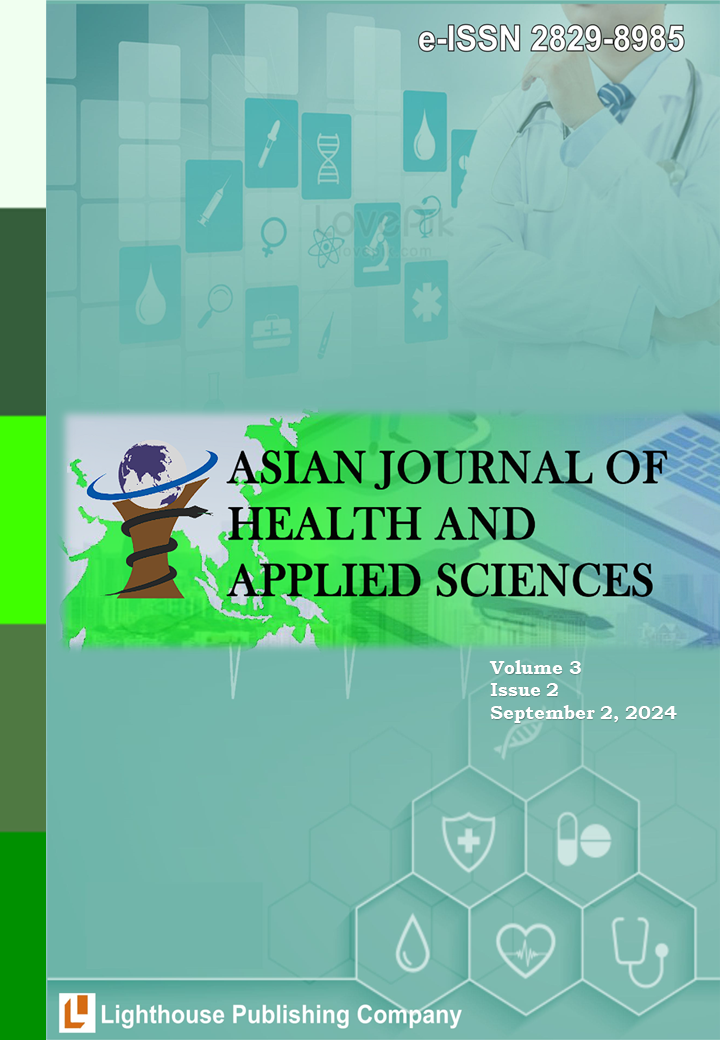Correlation Between Lead Levels and The Number of Erythrocytes in The Blood
DOI:
https://doi.org/10.53402/ajhas.v3i2.456Keywords:
Heavy metal, lead, erythrocytes, bloodAbstract
Lead is a toxic air pollutant that can damage human health, one of the areas with a high level of hazardous air population is Cimahi City, West Java, Indonesia. High lead levels can affect the decrease in erythrocytes, resulting in anemia. This study aims to determine the relationship between lead levels and the number of erythrocytes in the blood. The method used in this study is a quantitative descriptive method, with 18 participants. The blood samples obtained were examined for lead levels using an Atomic Absorption Spectrophotometer (AAS) with a wavelength of 283nm. The number of erythrocytes was analysed using a Hematology Analyzer. The data collection technique used was primary data which was then processed using the Correlation Test. Of the 18 respondents, one respondent was found to have high lead levels, which were at 0.1413 mg/L with a dangerous level category. Meanwhile, the results of the number of erythrocytes showed that two respondents had several erythrocytes above normal with the highest value being 6,170,000 cells/mm3 with a normal value of 4,400,000-5,900,000 cells/mm3. The results of the statistical correlation test seen from the significance value obtained a result of 0.183, this value is greater than the significant value of 0.05 so it can be stated that there is no relationship between lead levels and the number of erythrocytes. After testing, it was concluded that there was no significant relationship between lead levels and the number of erythrocytes in the blood.
Downloads
Submitted
Accepted
Published
How to Cite
Issue
Section
License
Copyright (c) 2024 Fahmi Rizal, Farhan Baehaki, Gina Fitri Layali

This work is licensed under a Creative Commons Attribution-NonCommercial-NoDerivatives 4.0 International License.

















